The sound of a dog constantly scratching or licking can be as irritating as nails on a chalkboard. But don’t blame your pooch for these bad habits - a skin condition is probably the culprit.
Certain skin diseases can be alleviated on our own with a home pharmacy, natural antiseptics, ointments, shampoos, …, but most of them require a visit to a veterinarian. Recurrent problems are a sign that something more needs to be done, than just treating the symptoms – it is also necessary to find the cause of these problems.
However, it is always necessary to use quality skin care products to relieve symptoms – shampoos and balms that contain natural ingredients that relieve itching, ointments that do not harm in the long run, …
The most common skin problems:

There are many factors that cause dry, scaly and irritated skin. Many dogs have dry and scaly skin in winter, which is due to temperature differences between a warm apartment and cold outside air. Caring for such skin in the winter is even more important. Bacteria and fungi can also cause scaly skin. It is also important to bathe the dog at the right time, as washing too often can lead to scaly skin.
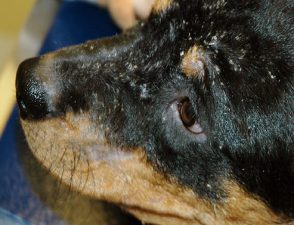
Oily skin can be caused by oily seborrhea (Seborrhea oleosa). In this disease, the upper layer of the skin and sebaceous glands secrete too much fat. We know primary (inherited) and secondary seborrhea. Primary seborrhea (inherited seborrhea) most often affects: Highland Terrier, Basset Hound, Doberman, American Cocker Spaniel, Golden Retriever, Labrador,… Secondary seborrhea can develop for various reasons, it can be caused by a long-term lack of minerals, vitamins, fats. due to allergies, due to digestive and metabolic disorders. In addition to oily skin, the disease is accompanied by dandruff and an unpleasant odor. The skin is most oily at the ears, under the armpits and on the lower abdomen. Seborrhea is a disease that makes the dog very itchy, so dogs with this disease also scratch uncontrollably to the blood. Scratching leads to hair loss, wounds, scabs and to secondary bacterial inflammation of the skin.
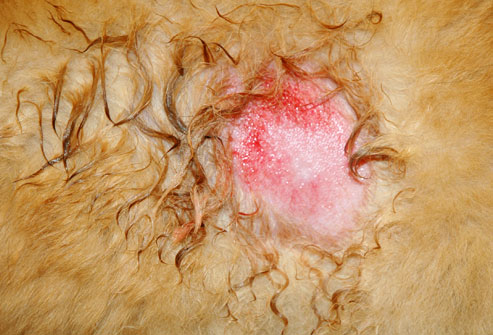
Damp eczema or hot spot most often occurs in the summer months. Mostly on the head, neck, lower back and hips. It is a moist inflammation of the skin that is very itchy. Moist eczema is associated with itchy skin. Constant scratching damages the skin and it begins to secrete serum, which causes the hair to stick to the affected area. The consequence of the above is, of course, even more severe itching.
The most susceptible breeds are those with a dense undercoat (Labradors, Golden Retrievers,…).
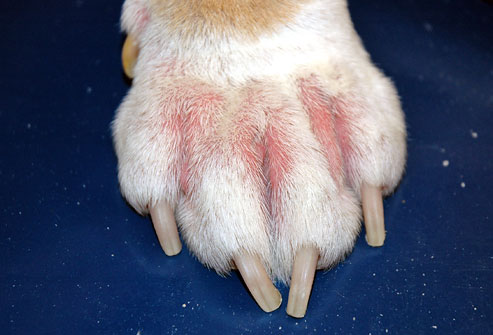
Dogs can have allergic reactions to grooming products, food, and environmental irritants, such as pollen or insect bites. A dog with allergies may scratch relentlessly, and a peek at the skin often reveals an ugly rash.
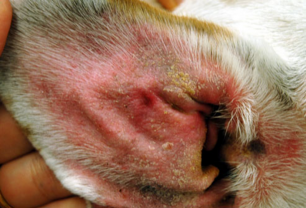
If your dog can’t seem to stop scratching an ear or licking and chewing her toes, the cause can be yeast infection. The infection usually strikes the paws or ears, where yeast have a perfect space to grow –

Also called acral lick dermatitis, this is a frustrating skin condition caused by compulsive, relentless licking of a single area – most often on the front of the lower leg.
The area is unable to heal, and the resulting pain and itching can lead the dog to keep licking the same spot.
 Anyone who shares their home with dogs knows that they shed.
Anyone who shares their home with dogs knows that they shed.
How much shedding is normal depends on breed, time of year, and environment.
But sometimes stress, poor nutrition, or illness can cause a dog to lose more hair than usual.
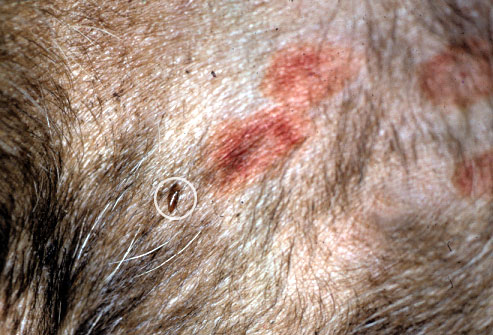
Ticks and fleas attach to a dog’s skin by biting and sucking blood.
Flea bites make the dog itch to the point that it can scratch to the blood.
Certain dogs can also develop an allergy to a better bite, which means that the whole body itches not just the bite site. Many synthetic antiparasitics against external parasites (ampoules, tablets, collars) can cause skin irritation, cause allergies and hypersensitivity reactions.
FOLLICULITIS
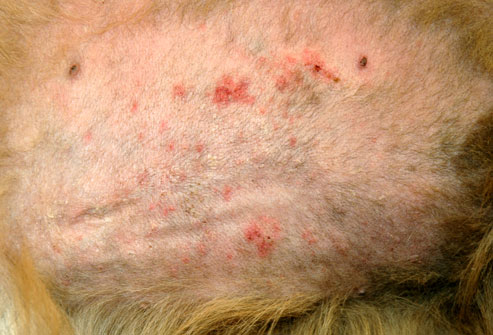
Superficial bacterial folliculitis is an infection that causes sores, bumps, and scabs on the skin.
These skin abnormalities are easier to see in shorthaired dogs.
In longhaired dogs, the most obvious symptoms may be a dull coat and shedding with scaly skin underneath.
IMPETIGO
 Another type of bacterial (staphylococci and / or streptococci) infection, impetigo is most common in puppies. It causes pus-filled blisters that may break and crust over. The blisters usually develop on the hairless portion of the abdomen.
Another type of bacterial (staphylococci and / or streptococci) infection, impetigo is most common in puppies. It causes pus-filled blisters that may break and crust over. The blisters usually develop on the hairless portion of the abdomen.
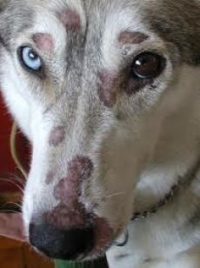
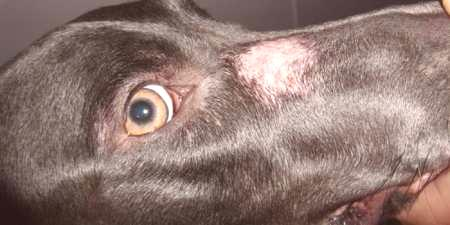
Lichens are fungi and are highly contagious among animals as well as humans. Diseases caused by fungi are also known as dermatophytosis. Dermatophytosis also includes trichophytia (caused by a fungus of the genus Trichophyton) and microsporia (caused by a fungus of the genus Microsporum). Dermatophytosis affects domestic animals, wild animals and humans. Dermatophytosis is considered a zoonosis, as it is a disease that is transmitted to humans.
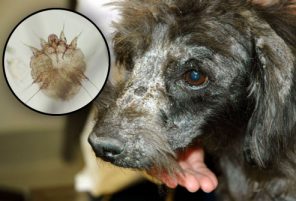
Mange is a skin disorder caused by tiny parasites called mites.
Sarcoptic mange, also known as canine scabies, spreads easily among dogs and can also be transmitted to people, but the parasites don’t survive on humans. The symptoms are intense itching, red skin, sores, and hair loss. A dog’s ears, face and legs are most commonly affected.
Demodectic mange can cause bald spots, scabbing, and sores, but it is not contagious between animals or people. The disease takes two forms: local (regional) where individual changes occur on the head or limbs and general (extensive), which covers the skin throughout the body. Local demodicosis is most common in puppies (up to 1 year of age). The changes often appear on the head (around the eyes and nostrils) and then spread to the limbs. The hair falls out in these places, the skin is darker in color but not itchy. The generalized form affects a larger area. In places of the body where there is less hair, dandruff appears, at first the skin is red and later darkens (grays). Subsequent bacterial infection may cause itching, pimples, and scabs.

In rare cases, skin lesions or infections that won’t heal can indicate an immune disorder in your dog.
One of the best known is lupus, a disease that affects dogs and people. Lupus is an autoimmune disorder, meaning the body’s immune system attacks its own cells. Symptoms include skin abnormalities and kidney problems. It can be fatal if untreated.
SOURCE: https://pets.webmd.com/dogs/ss/slideshow-skin-problems-in-dogs





